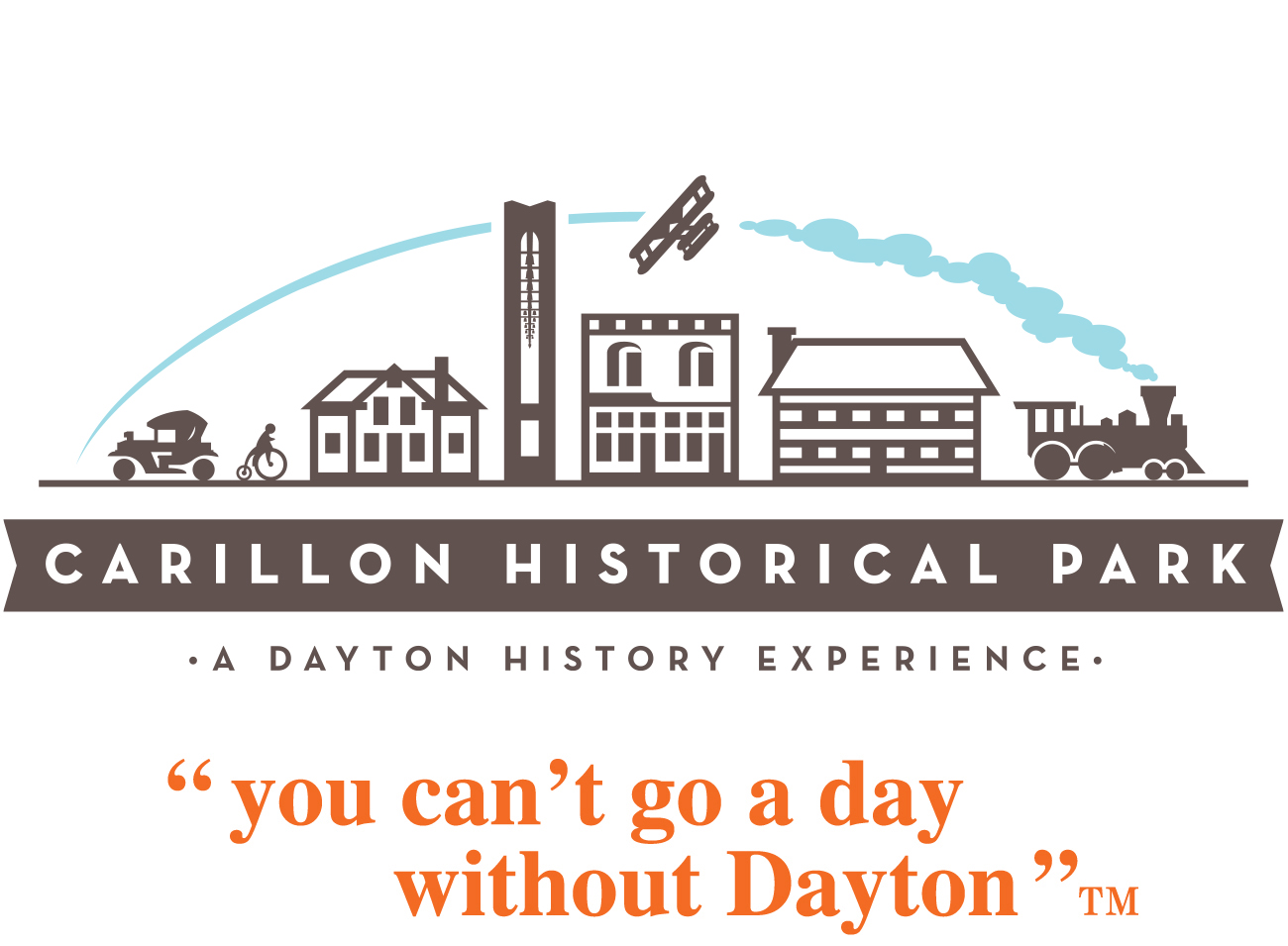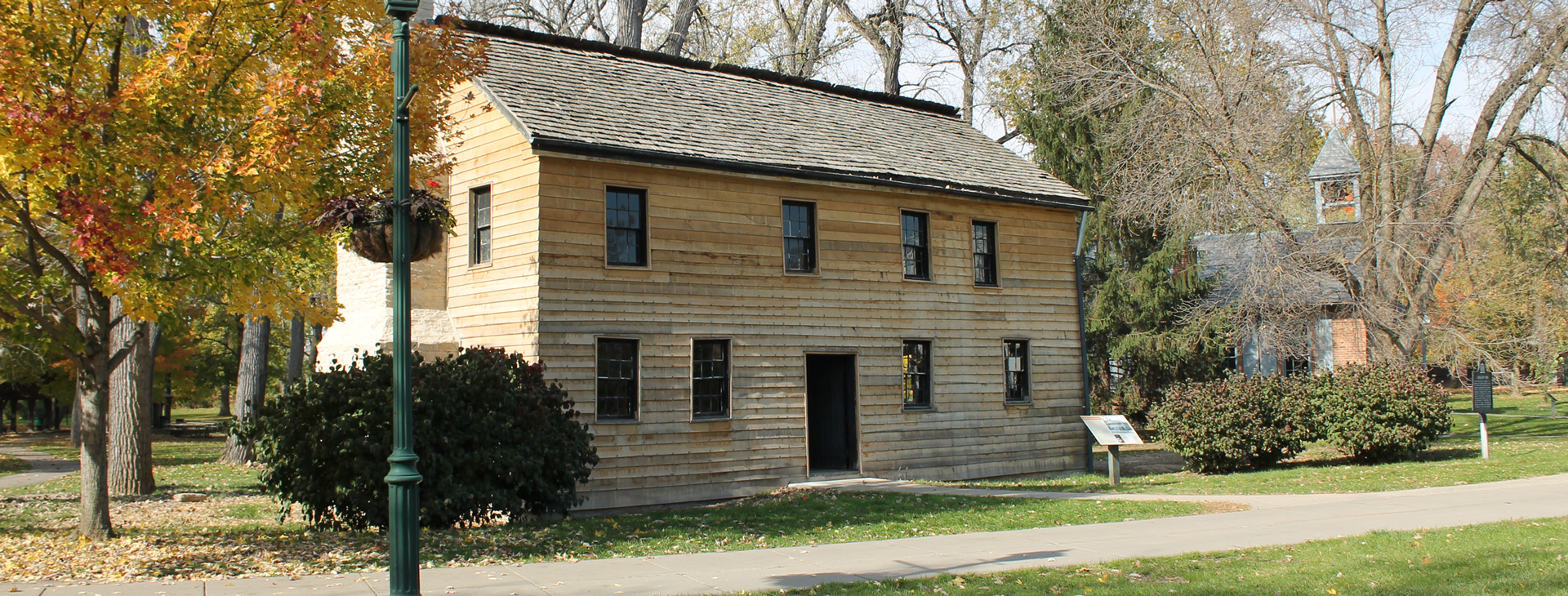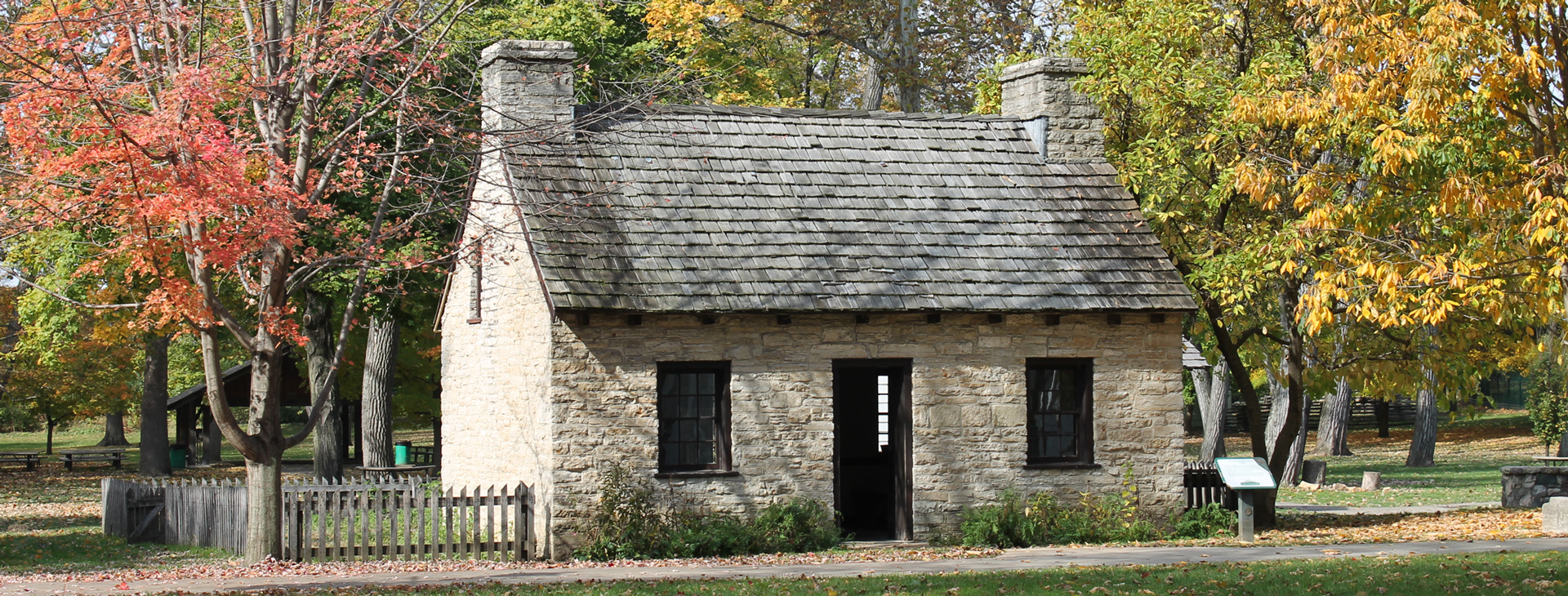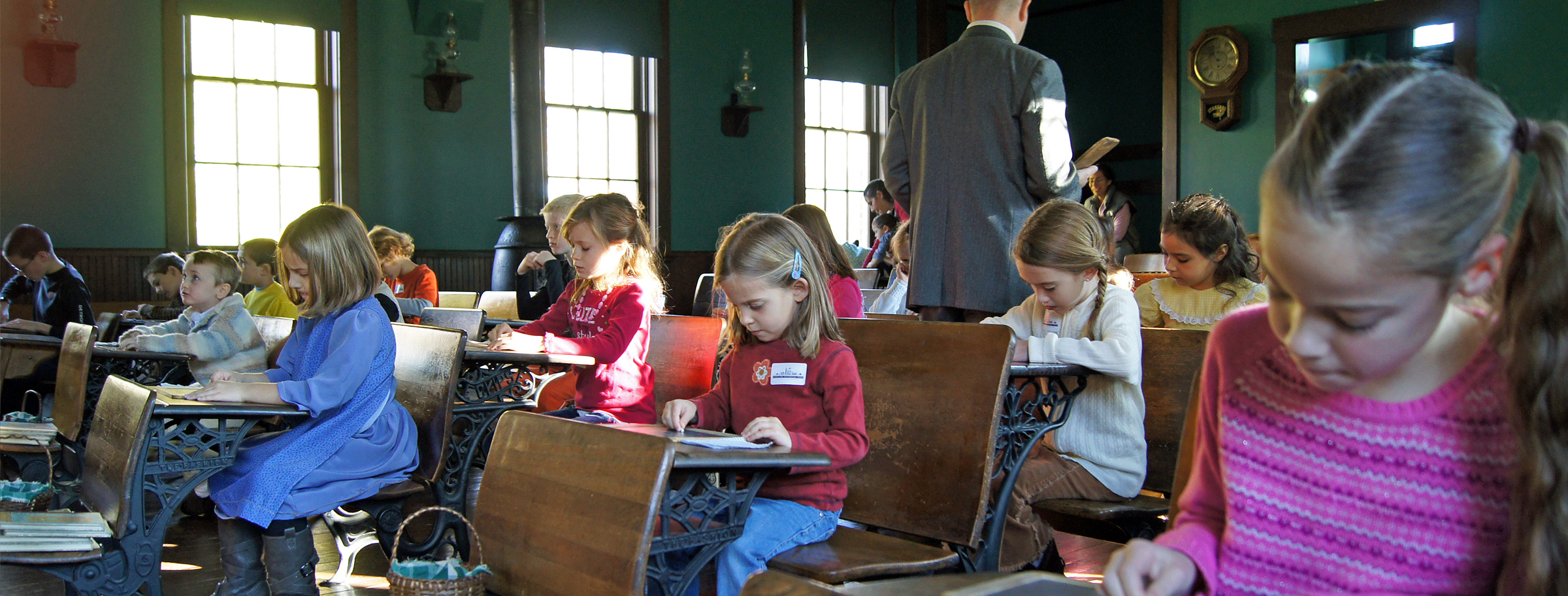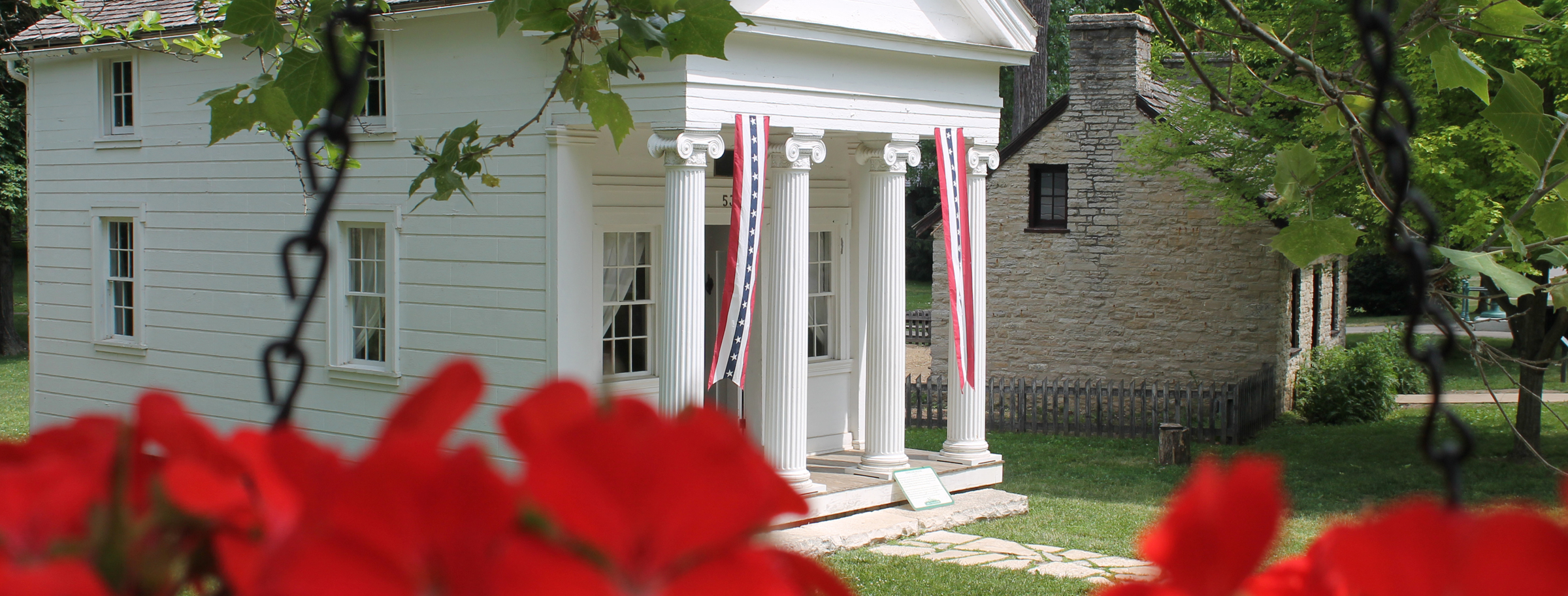Early Settlement Area
Consisting of Newcom Tavern (Dayton’s oldest standing building, ca. 1796), the William Morris House (ca. 1815), the Hetzel Summer Kitchen (1817), Newcom House (ca. 1841), the Watervliet Shaker Building (ca. 1819), and Locust Grove School No. 12 (1896), Carillon Historical Park’s Early Settlement Area recalls the early days of Dayton—a city that would grow and evolve to eventually change the world.
Adhering to the rhythms of early settlement life, on select days, and during special events, the Early Settlement Area offers period demonstrations: candle-dipping, gardening, hearth-cooking, quilting, sewing, musket firing, blacksmithing, woodworking, and more. Period games are also played: Jacob’s Ladder, Graces, French & English, and others. Tavern Dinners and School House Education programs are two very popular aspects of the Early Settlement Area.
Newcom Tavern (ca. 1796):
Dayton’s oldest standing building, Newcom Tavern was central to community life. It served as the city’s first jail, church, general store, and Montgomery County’s first courthouse.
William Morris House (ca. 1815):
William Morris, a Revolutionary War veteran, arrived in Montgomery County in 1806. In 1815, he bought a 20-acre farm near Centerville and moved into this house with his family. It originally sat on West Social Road near Centerville.
Watervliet Shaker Building (ca. 1819):
Built in Van Buren Township (now the city of Kettering), Richard McNemar’s print shop was originally located in this building; it made Watervliet a center of Shaker printing. McNemar printed the second Shaker hymnal ever published, as well as numerous tracts and pamphlets.
Hetzel Summer Kitchen (1817):
Designed to keep the heat out of the main house during hot weather, this summer kitchen was used by Peter Hetzel, a carpenter and co-founder of Zion Memorial Church on South Dixie Drive in Moraine, Ohio.
Newcom House (ca. 1841):
Though there is no record that he lived in this Greek-Revival house, George Newcom, an early Dayton settler and tavern owner, owned the land on which it was built. Greek-Revival architecture was popular in America from about 1825-1860.
Locust Grove School No. 12 (1896):
Built at the corner of Possum and Bird Roads near Springfield, Ohio, children in 1st-8th grade attended this school from 1896-1929. Students often had to walk several miles to school; one teacher taught all eight grades and, in turn, tended to be quite strict.


